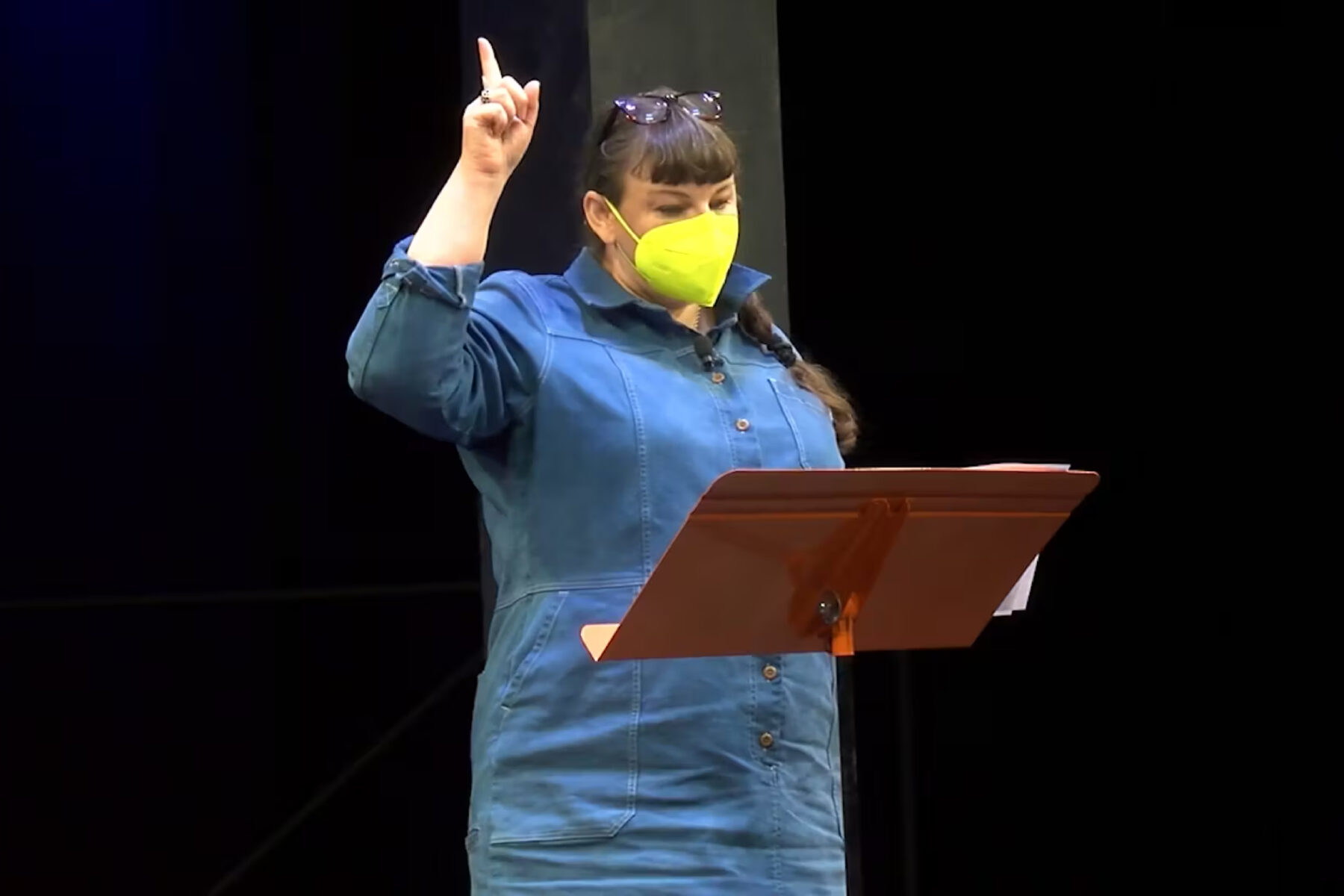Weaving the opposite of fascism: Narrative organizing to build narrative power
I have myalgic encephalomyelitis (ME) from Long Covid, formerly called chronic fatigue syndrome. I first shared these thoughts while standing on a stage at Frank 2023. I ask for care on that stage as I figure out my new brain and body. A statistic I’ve thought about a lot in the past year is: 75% of people with ME are unable to work, and 25% are homebound or bedridden. I’m grateful to disability justice activists for all they have done to help many of us live.
Three of my grandparents fought fascist Nazis; this is in my blood. I’m learning to fight fascism in ways other than my English grandma Mary and American grandpas Bill and Homer. Stopping fascism is not a one-time thing, and I bring that lineage into the rooms I work in.
This isn’t about me. Building the future is work across movements, work BIPOC leaders do to build power. Everyone in this room, and everyone you know, and everyone they know are important to building power.
I’m here to talk about weaving fascism out of our present and eradicating it in our future, advice, and insight for the generations at frank.
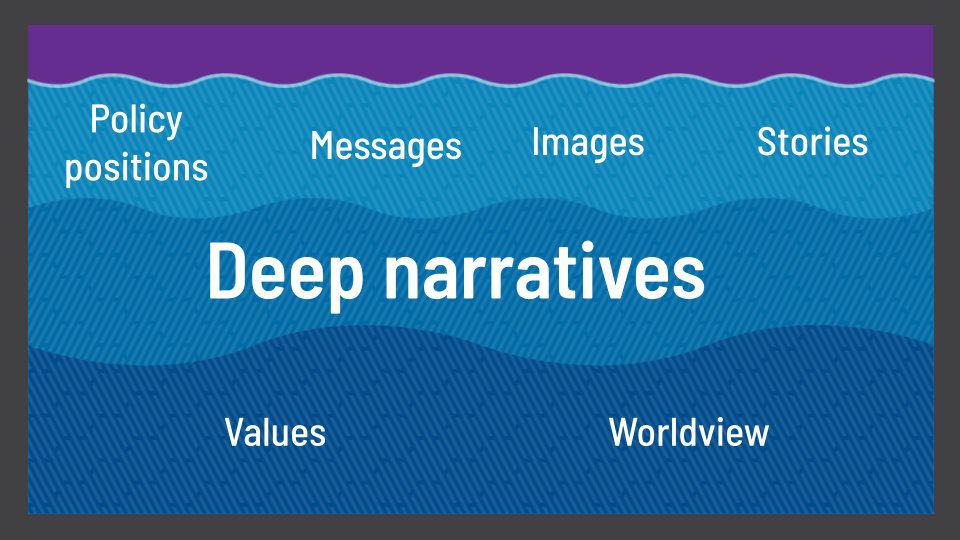
The waves model illustrates how narrative is the connective tissue between the every day and foundational things like values.
Start off with a little narrative vocabulary:
On top of the waves model are things you see every day: policy positions, messages, and stories. At the bottom, are values and worldviews, and in the middle connecting both are deep narratives — something that is hard to touch.
Deep narratives are the stickiest themes in collections of stories. They have been around for at least 50 years if not millennia. Deep narratives are the layer narrative organizers work in.
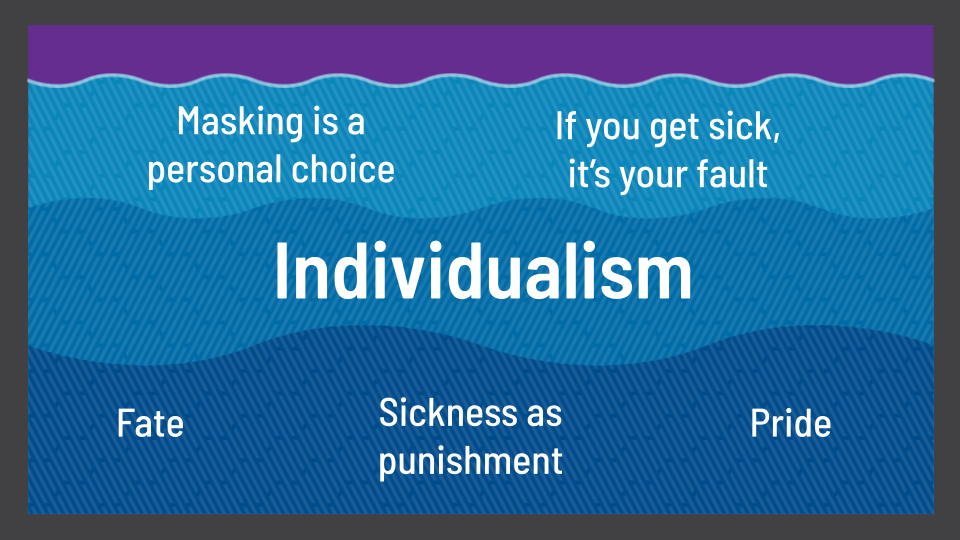
A specific application of the waves model to masking and Covid.
An example to make this clearer is the deep narrative of individualism. You might be seeing messages like masking is a personal choice. If you get covid, it’s your fault.
The values and worldviews that see the idea that ‘if you get sick, then it’s your fault’ might also see ‘sickness as a deserved punishment from god,’ or ‘fate as predetermined and you have no agency,’ or ‘every man for himself.’
In her brilliant book Viral Justice, Ruha Benjamin calls this flavor of individualism: “a pathological self-interest.” This is an example of a harmful narrative.
Harmful narratives hold back your vision of the future and maintain existing power structures. They stand in the way of the future you’re building.
Helpful narratives allow you to imagine the future you dream of. They advance and make your work durable.
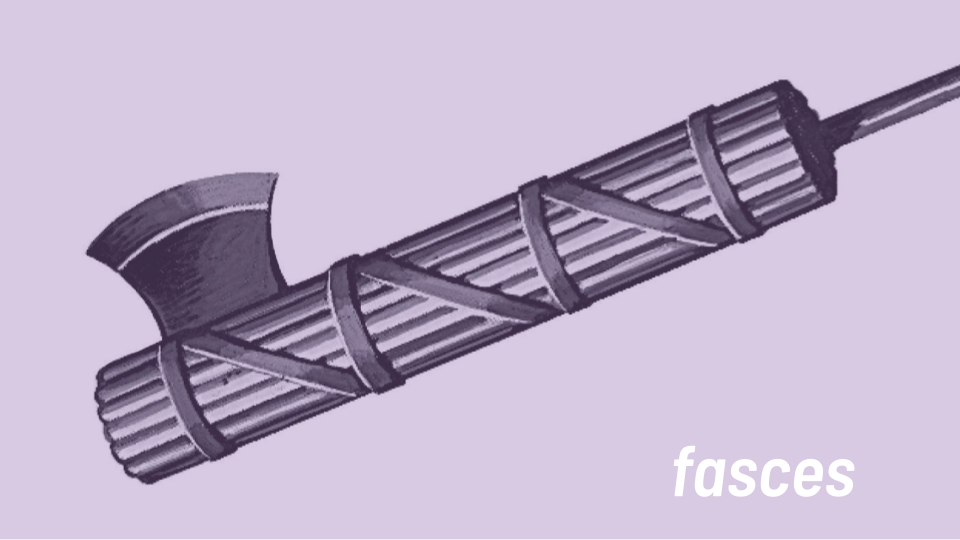
The fasces
Here come the fascists. This bundle is called a fasces. There’s a popular mythology around how this tied-up bundle of sticks surrounding an axe makes the whole thing invincible, unbreakable. And physics-wise, that’s true. True-ish.
Have you heard that meaning? In his history book The Fasces: A History of Ancient Rome’s Most Dangerous Political Symbol, T. Corey Brennan attributes that meaning back to one of Aesop’s fables. Brennan was also in the band the Lemonheads.
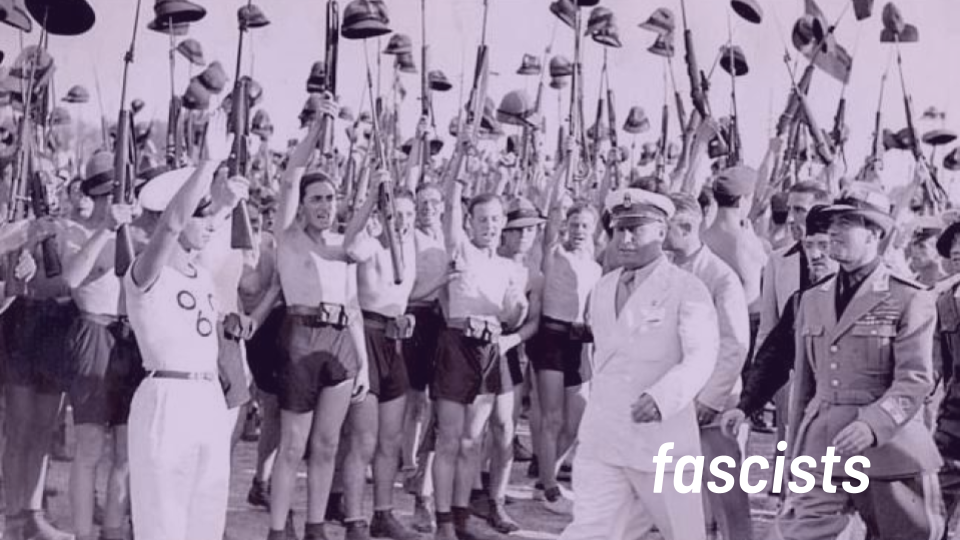
The Italian Fascists
In this photo of Mussolini, you’ll see that he’s surrounded by men visibly bearing weapons. That’s an important part of being a fascist. The Italian fascists chose the fasces because it meant strength through unity to them. There was a healthy dose of nationalism thrown into their selection. Pride in the Roman Empire. The visible display of death in the hands of those holding power by force.
A related word is “fascia.” Fascia is the name of the sheath surrounding our bundles of muscle tissues, the same root word as fasces: bundle. Our fascia holds the many wild bits of our bodies together cohesively into one big thing. I’m bringing in a somatic or embodied perspective here. But I will not ask us to drop into our bodies or take a breath because I’m talking about fascism. Let’s stay in our heads.
I’m thinking about how our bodies bundle or gather strength. Fascia holds a posture, sometimes a posture from a moment of painful trauma. One reason your back might hurt after a car accident is an injury to your fascia.
Our fascia holds the painful posture as an act of protection, but to heal, we need to resource a path to gently release that posture, the pain, and the trauma. To heal, we need to resource a way to bend, to flex our strength, and not to break. How can we learn from the wisdom and the fragility of our own bodies? How can we resource a flexible, strong, collective power?
The fasces didn’t start as a metaphor for unity. It’s a literal bundle of the tools of violence used to maintain dominant power in Etruscan and Roman times.
“Spare the rod and spoil the child.” A harmful narrative about authority, of parental power coming from violence. A generational trauma, a painful posture held and repeated in generations.
The Roman fasces bundled birch rods—instruments of torture—with an axe for executing people who threatened the status quo. A form of governance where top officials paraded weapons of pain and death in the streets.
Imagine the harmful narratives behind the fasces as a tool and a symbol.
European history is essential to surface today and look at under a bright light. I highly recommend Brennan’s Fasces book.
Now that I’ve gotten some surprisingly relevant Classics nerd stuff out of the way, I’ll share how not to be fascist.
We are stronger together. We are stronger together.
We are building multiracial power, and the people most impacted by harmful dominant narratives belong at the center of any narrative change effort.
We are stronger together.
But not strong like a bundle of weapons.
We are strong like a forest of trees whose roots hold each other up in storms, whose fungi cycle death into life.
We are strong like a quilt, made of many pieces, joined carefully by hand, and worked a little bit every day, as I learned from grandma Pat.
We are strong like a choir and strong like the many voices raised together in a protest.
What strength do we bundle? Our interdependence. Freedom is collective, as Mia Birdsong tells us.
I’m one of many people building narrative organizing infrastructure. We recruit. Come help build!
Part of narrative organizing infrastructure is communicators. It’s essential for communicators to understand and TO DO narrative organizing because we have the option to facilitate building narrative power. I know there are people here building narrative power. I see you.
I especially want to remind us this: You’re also in a position to repress narrative power. In our ecosystem, there are a lot of dogmatic communications. The easy way to do communications —there’s lots of research behind its efficacy—is to have lockstep message discipline, a top-down strategy driven by so-called experts. Most common metrics have been built for that, coming from the needs of corporate or electoral campaigns. A lot of communications practice is built for short-term wins. But the reality is: those messages may never add up to the future we want.
A lot of comms advice is not grounded in the same reality as the Black, Brown, and Indigenous people who most need the change. But we have the opportunity to align. We have the opportunity to follow BIPOC leadership and learn from it. Information can flow back and forth.
Narrative organizing is the deliberate practice of bringing together people and organizations to hold and achieve a shared narrative goal. It’s a critical infrastructure for our future like my grandpa Bill’s work long ago running telephone wires on tall poles to connect people in rural Ohio.
Only together can we name the harmful dominant narratives that are holding us back and build the beautiful, helpful narratives of a just future.
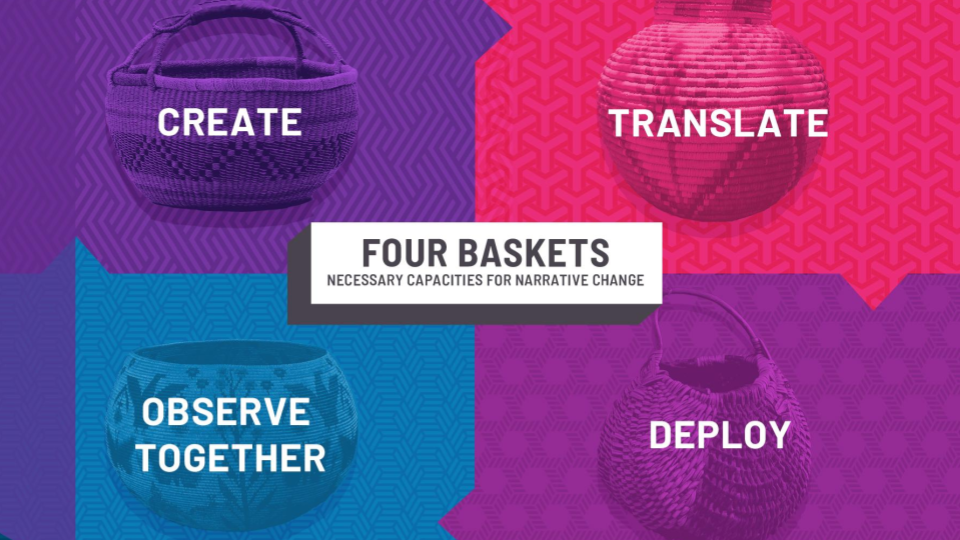
The Four Baskets is a narrative capacity framework. It’s a map of narrative organizing infrastructure that we need to build—that we are building together.
Four Baskets starts with observing together. How do you fill that basket? Participatory research is a fancy way to describe a way to get oriented: we can talk and listen in small groups to understand the harmful narratives that hold us back and start dreaming together. Different perspectives come up in those groups, and we listen for that and overlap too.
If we want a true democracy—the opposite of fascism—landscaping, the process is one way to ensure that we’re building the whole picture. From the Observing Together basket, you move into the:
- Create basket: Creating deep narratives is beautiful, and we all need more practice.
- Translate basket: Refract, held by many voices. I’ll dig more into this critical basket.
- Deploy basket: disseminate, distribute. Highly professionalized. Nonprofit communicators have a lot of capacity here; the baskets that come before Deploy are ones we need to work on.
When I talk about the Four Baskets, I remember and recognize the brilliant leaders in the formation formerly known as “Our Minnesota Future,” including Reverend JaNaé Bates, for allowing us to work alongside and clarify this framework. One way we knew we were learning alongside “Our Minnesota Future” was through a focus on that Translate basket: we can speak in many voices. There’s a word for this: polyvocal.
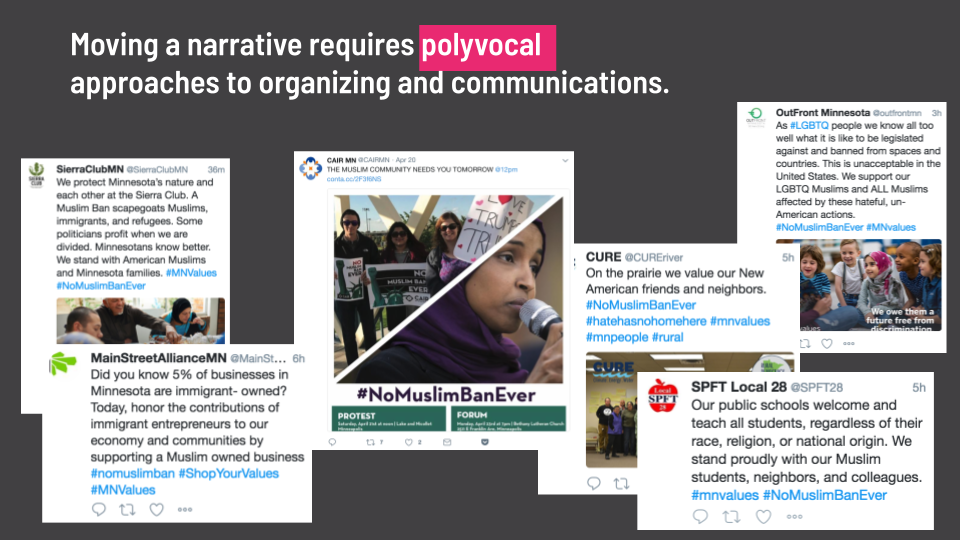
Above is a collection of tweets from a brilliant campaign by the Minnesota coalition. The scapegoat of the day was the Muslim community. Groups in Minnesota worked together to advance a narrative strategy around the Minnesota values of hospitality, of room for everyone at the table.
Different groups in the coalition told different stories, all headed in the same direction: a Muslim ban went against dearly held Minnesota values.
We CAN handle the complexity and should be willing to adjust to the loss of centralized power that comes from a polyvocal approach. This is the work of narrative power building.
Our go-to metrics can’t easily measure the brilliant kind of campaign Our Minnesota Future ran—but these many stories are tiles in the mosaic of our future.
When thinking about how to do narrative change, you want to start your narrative organizing by filling the “Observe Together” basket. Orient to where we are today, what needs to be healed, and the healing resources available to build us true multiracial democracy.
Orient by creating a landscape that includes all of us, all of our narrative concerns. We do that by sitting and talking together.
Once you know who you’re working with and are all oriented together, you want to move into the “Create” basket, where you’ll generate the helpful deep narratives you will eventually drive in public.
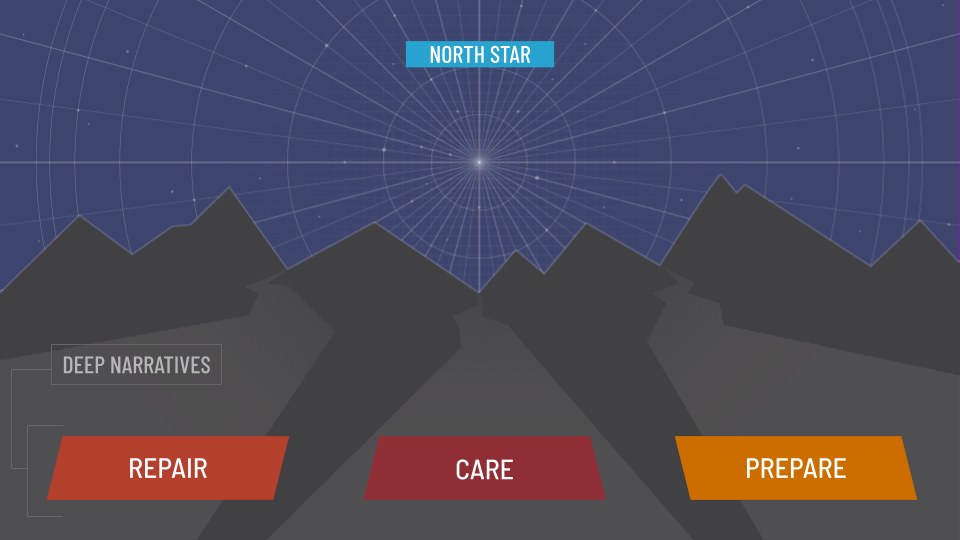
Going deeper on how to create narratives: A Narrative North Star is one type of narrative alignment. This is a high-level goal for where you’re headed together. I’d recommend not having the goal of fascism, for example. Have a different goal, please.
What is that full, powerful future you envision? What’s the biggest dream your whole org, network, coalition, or movement can agree to? Can we dream across movements? We must try. And we need the narrative organizing infrastructure to do that.
Narrative alignment is one way to cut across all the silos that we’re in, to dream something with way more people power behind it. That’s what it will take to win.
A Narrative North Star is a navigation point toward collective freedom. We underpin a Narrative North Star with values and worldviews expressed in stories, messages, policy positions, and direct actions. It’s ready to be held in many voices while feeling true and meaningful to each group.
Where are we headed together? How do we navigate all the terrain we must cross to get to that future? Bundling and gathering our voices into a strong, resilient echo chamber that builds and widens over time.
Charting a North Star is complex work. It needs to be durable and needs to shine bright. And as NI alumna Liz Hynes said: charting a Narrative North Star is an act of optimism. We know people are already doing this important work and need lots more of us.
We are stronger together.
But not strong like a bundle of weapons used to steal people’s power through the threat of trauma.
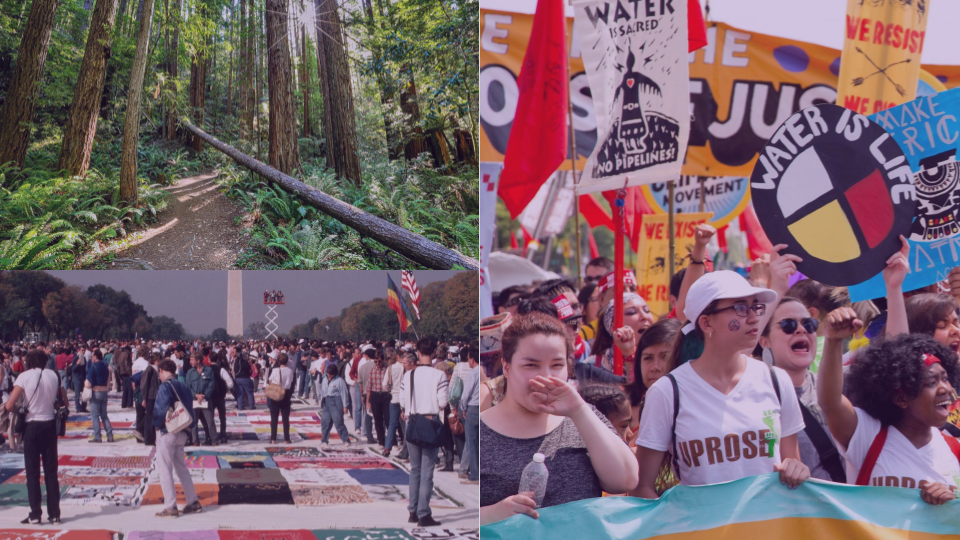
We are strong like a rooted forest.
We are strong like a hand-stitched quilt.
We are strong like a choir, strong like many voices raised in protest.
We’re all harmed by harmful narratives.
The opportunity is for us to speak powerfully with as many voices as there are stars in the sky, to release and heal from trauma in the body politic, and to organize to build narrative power together. Let’s do this work.
Watch Rachel Weidinger’s presentation on ‘Weaving the Opposite of Fascism’ from Frank 2023 here.

